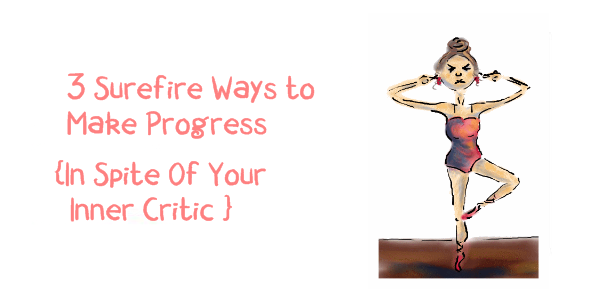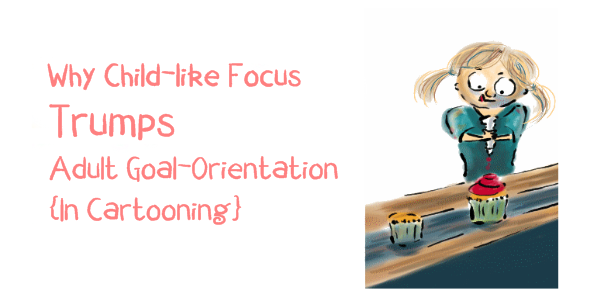
Your inner critic is that small internal voice of doubt that continually tells you your work is not up to much…
Your inner critic is like the anti-Muse. Not many of us cartoonists yammer about our Muses but to be honest, I’ve yet to meet the budding cartoonist who doesn’t have a deafening and persistent Inner Critic.
Would you recognise your Inner Critic?
Your inner critic is that small internal voice of doubt that continually tells you that your work is not up to much. That no matter how much work you put in, nor how many courses you take, you’ll never translate the pictures in your head into sketches on paper.
This inner voice is lethally destructive
The end result of taking the criticism to heart is that it paralyses you. You do little or no work, because you know that whatever you do will have failings. And because progress can’t happen without effort, you don’t learn or improve. You simply stagnate – it’s a nil sum game.
Here are three sure-fire ways to silence your Inner Critic:
• Commit to doing volumes of work, no matter what
• Get objective feedback
• Find a proven process and trust it
Commit to doing volumes of work
When you commit to doing volumes of work, you have taken the first step towards making progress. The more work you do, the more opportunities you make to realise your shortcomings and correct them. And when you commit to it in advance, (i.e. I will do x work at y time on each day), you circumvent last-minute procrastination, too.
But volumes of work are just the first part of the process. You also need constructive criticism in order to improve.
Get objective feedback
The reality is that we struggle to see our own work clearly. Or rather, we seldom have difficulty seeing its faults but we don’t see its merits easily at all. So it’s essential to get an outside opinion – from someone who can give you objective advice.
You can’t rely on family or friends for the most part, because they don’t know what benchmark to measure you against. So it’s best to reach out and find someone who knows what they are looking at. Ideally you want someone familiar with whatever process you are using.
What is the benefit of having a process?
Putting the right process in place helps you to improve simply by following it. As improvement builds motivation which in turn builds momentum – it’s the beginning of a virtuous circle. So if you already have a process that works for you, embrace it and ride it for all you’re worth. If not, I recommend strongly that you find one because it saves a load of frustration.
This is what we harness in our cartooning community…
… These core activities of volume, feedback and process.
One of our students posted in her weekly learning recently. While she couldn’t see much to praise in her own assignments for the week, she was full of praise for her class mates. She wrote “When I read each person’s week all together in one sitting, it’s like watching a slow motion movie of each person’s improvement. Indeed, improvement has to happen if we put in the effort.”
So a fourth item to add to the list might be “Surround yourself with like-minded others”
When you are part of a merry throng all striving, sketching and joking together, it’s much easier to make progress. In fact it’s almost inevitable. There’s no need for a Muse when the voice of your Inner Critic is overridden by your comrades.
—
Did you like this post?
If so, I would be so grateful if you share it with ALL your creative friends!
And for even more tips to master the art of cartooning as an adult, subscribe and get my tips delivered direct to your Inbox 🙂

